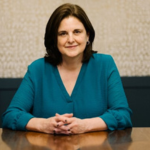Wealth Screening vs. Prospect Research: Know the Difference

A winning fundraising strategy involves more than just hosting an annual gala and sending a few well-timed appeals—it requires you to take the time to understand your donors as people. This is especially important if you’re seeking a major or planned gift, since these donors will only give if they’re truly invested in your organization’s success.
That’s where donor research comes in. But if you’re new to major donor research, you might be confused by two common terms you’ll run into: wealth screening and prospect research.
In this post, we’ll clarify the difference between these terms and explore how to use both types of research in your fundraising strategy. Knowing these distinctions will empower you to get the information you need to build strong relationships with donors and solicit support when the time is right.
Myths About Prospect Research and Wealth Screening
First, let’s address a few misconceptions about prospect research and wealth screening. Their definitions have changed slightly over the years, leading to confusion and differing opinions among nonprofit professionals.
You may have heard statements like:
- “Wealth screenings only look at wealth data.” Nowadays, thorough wealth screening tools consider data about capacity (wealth), affinity (warmth for your cause), and propensity (philanthropic habits).
- “Nonprofits must choose between wealth screening and prospect research.” Donorly’s prospect research guide explains that while you may use one research method on its own, it’s best to use both in sequence for major gift fundraising.
- “Prospect research is better than wealth screening.” “Better” is subjective, but many fundraising professionals agree that wealth screenings and prospect research provide the most comprehensive, actionable data when they work together.
The main takeaway is that wealth screening and prospect research are different, but they’re not mutually exclusive. Rather, a wealth screening is often the first step in a nonprofit’s full prospect research process to find and qualify major donors. To learn more, let’s dig into the details of each method.
Wealth Screening: An Overview
Wealth screening is the process of using public and third-party data to screen the supporters in your database for indicators that signal they may be able and willing to give a major gift. This process gives you raw data about prospects, which NPOInfo explains might include wealth markers, like real estate holdings and stock ownership, and philanthropic markers, like giving and engagement habits.
Once you receive this data from a wealth screening, it’s up to your nonprofit to know what to do with it. You could use your wealth screening data to segment prospects, or you could verify and supplement that data with prospect research.
How to Conduct a Wealth Screening
To conduct a wealth screening, you can either work with a fundraising consultant (who can also help you with the full prospect research process) or a wealth screening provider. While the process depends on your provider, wealth screening typically looks like this:
- Your nonprofit supplies the donor data from your database.
- The wealth screening provider uses machine learning and predictive models to compare your donor data with information in professional wealth databases.
- Your organization receives a report with raw data about your donors’ wealth and philanthropic indicators.
Some wealth screening tools leverage AI to provide further insights for your nonprofit, looking for patterns and opportunities in your donor data. For instance, your wealth screening might reveal that a monthly donor who gives $500 each month has increased their giving capacity significantly. With this insight, you might design an outreach strategy to increase their monthly gift to $800 or $1,000. Or, you could propose they make an annual major gift of $10,000-$12,000.
More than likely, your wealth screening will produce a lot of new data you need to parse through, verify, and analyze. That’s where prospect research comes in—helping you take that data a step further.
Prospect Research: An Overview
Prospect research, also known as prospecting, is a more comprehensive process than wealth screening. While it often starts with a wealth screening, prospect research involves in-depth, hands-on analysis to confirm which individuals are the best prospects and to gain a deeper understanding of their motivations.
You’ll look for data that affirms each prospect has sufficient capacity, affinity, and propensity indicators to contribute a major gift to your organization. By analyzing these markers alongside the prospect’s relationship with your nonprofit, you can qualify each prospect and prioritize them based on potential giving amounts and their likelihood of donating.
This process involves exploring a variety of data sources, compiling new donor data, and putting that information into perspective to predict donor behavior. It’s time-intensive and requires analytical skills to get accurate, actionable results.
How to Do Prospect Research
We recommend outsourcing prospect research to a professional who can handle the whole process for you. However, if you choose to do it yourself, here’s a basic rundown of the steps to take.
First, verify and supplement the data from your wealth screening by conducting manual research across various sources. The following resources will help you get a complete picture of who each prospect is and how they can participate in and contribute to your cause:
- Professional prospect research databases
- Google and Wikipedia
- Internet archive tools like the Wayback Machine
- Social media platforms like LinkedIn, Facebook, and Instagram
- Investment records from the SEC
- Real estate sites like Zillow
- FEC public political contribution data
- Other nonprofits’ donor lists and annual reports
Make detailed notes about your findings in your donor database, and estimate each prospect’s giving potential and the amount of effort it might take to cultivate the relationship. Then, segment and prioritize prospects based on your organization’s major giving strategy.
The information you discover during prospecting will not only give you the names of the best prospects to reach out to, but also the details you need to appeal to each prospect’s personal motivations. All of this data will help you lay the foundation for a strong and lasting relationship.
Many nonprofits understandably lack the time and knowledge required to use all of these tools and opt to work with a prospect research consultant instead. The great thing about this approach is that a consultant can help you not only find prospects but also design a strategy for getting to know them and soliciting their support.
Wealth screening and prospect research are both powerful processes for understanding your donors. As you work to incorporate these donor research methods into your larger fundraising strategy, remember that you can rely on the expertise of a nonprofit consultant to make your research efforts more efficient and effective.
 Founder and President Sandra Davis leads Donorly with over 30 years of fundraising experience and leadership. Sandra has consulted on numerous capital campaigns, applying community building techniques, prospect research, and storytelling to help organizations meet and exceed fundraising goals and expand missions. Under her leadership, Donorly has grown to support the fundraising efforts of over 100 clients, helping them raise over $500 million for their respective causes.
Founder and President Sandra Davis leads Donorly with over 30 years of fundraising experience and leadership. Sandra has consulted on numerous capital campaigns, applying community building techniques, prospect research, and storytelling to help organizations meet and exceed fundraising goals and expand missions. Under her leadership, Donorly has grown to support the fundraising efforts of over 100 clients, helping them raise over $500 million for their respective causes.




